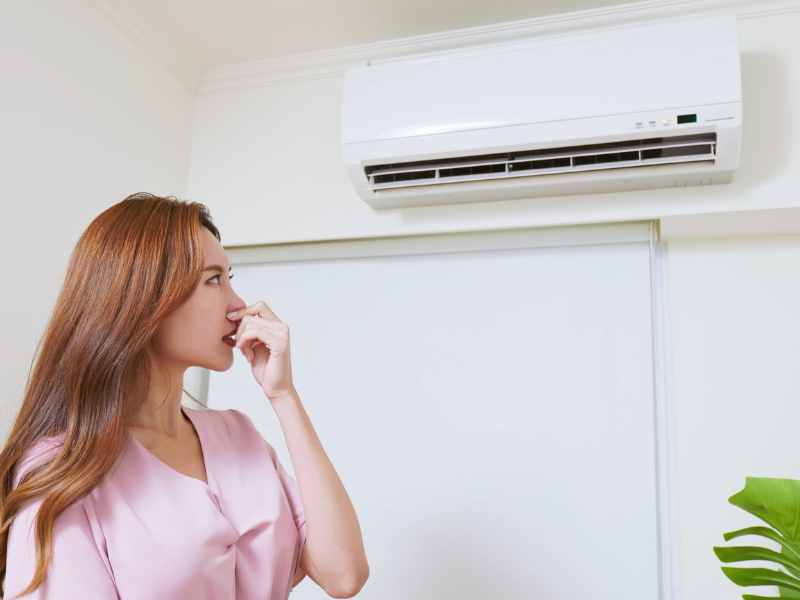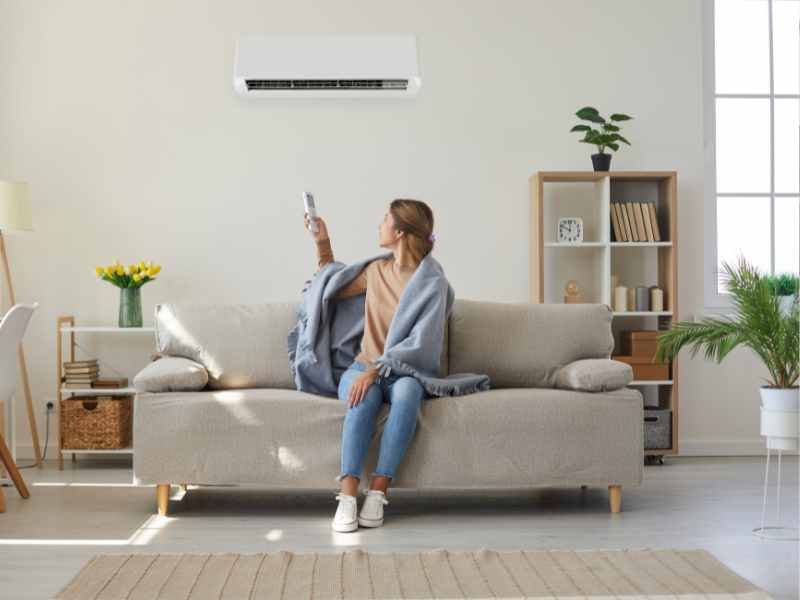Formaldehyde in Air

Formaldehyde in air is often overshadowed by other pollutants like carbon monoxide and particulate matter. Yet, it distinguishes itself with a pervasive presence and significance in indoor air quality. This unique trait underscores its importance in the realm of Volatile Organic Compounds (VOCs), offering a specific challenge that marks formaldehyde as a crucial factor in maintaining healthy indoor environments.
Key sources of formaldehyde include building materials, household products, tobacco smoke, and fuel-burning appliances, each contributing to its levels indoors. Single-use items and certain types of furniture also stand out, releasing formaldehyde into the air and offering a less obvious but equally important source for consideration. Diving deeper, each source of formaldehyde presents its own set of concerns, release mechanisms, health implications, and strategies for mitigation.
The following sections will delve into these aspects meticulously, providing a comprehensive understanding of how formaldehyde affects air quality and health, and what steps can be taken to reduce exposure in homes and workplaces. This exploration will offer valuable insights into managing this common but often underestimated indoor air pollutant.
What is Formaldehyde
Formaldehyde is a colorless gas that often carries a strong smell. It is classified under a larger family known as Volatile Organic Compounds (VOCs). This gas is widely used in the production of building materials and numerous household products.
Its presence in the air can stem from the off-gassing of these materials and products. Additionally, activities like tobacco smoking and the use of fuel-burning appliances indoors can release formaldehyde into the environment. Understanding formaldehyde is crucial because exposure to it can lead to adverse health effects.
Why is Formaldehyde in the Air
Formaldehyde finds its way into the air primarily through its widespread use in building materials and household products. Items such as plywood, insulation, glues, paints, and fabrics can emit formaldehyde, thus elevating its levels indoors. Moreover, tobacco smoke and emissions from fuel-burning appliances like gas stoves are significant contributors, further enriching the indoor environment with formaldehyde.
Each of these sources has a distinct role in the presence of this compound in the air, making it a prevalent but variable indoor air pollutant.
Sources of Formaldehyde

Formaldehyde, a significant indoor air pollutant, emanates from a variety of sources, each contributing to its presence in the air we breathe.
Building Materials and Products
Building materials such as plywood, fiberboard, and insulation are known to contain formaldehyde-based resins. These materials can off-gas formaldehyde, especially when new, increasing its concentration in indoor air.
Household Products
Household products, including items like glues, paints, waxes, and cleaning agents, often incorporate formaldehyde in their composition. The use or storage of these products indoors can lead to the release of formaldehyde vapors, elevating indoor air levels.
Tobacco Smoke and Fuel-burning Appliances
Tobacco smoke is a significant indoor source of formaldehyde. Additionally, fuel-burning appliances such as gas stoves, kerosene heaters, and wood-burning stoves emit formaldehyde when operated inside. These sources collectively contribute to the accumulation of formaldehyde in indoor environments, underscoring the importance of awareness and mitigation strategies to protect indoor air quality.
Health Effects of Formaldehyde Exposure

Exposure to formaldehyde can lead to a spectrum of health concerns, affecting individuals differently based on the duration and intensity of exposure. Short-term effects include immediate reactions such as eye, nose, and throat irritation, which are common. Individuals might also experience coughing and other respiratory symptoms, alongside skin irritation.
On the other hand, long-term effects are more severe and carry significant health risks. Prolonged exposure to formaldehyde has been associated with an increased cancer risk, particularly concerning nasal and throat cancers. Additionally, it can exacerbate or trigger asthma and allergic reactions, posing long-term health challenges.
Recognizing these health effects underscores the importance of minimizing exposure to formaldehyde to safeguard health and well-being.
Short-term Effects
Eye, nose, and throat irritation
Exposure to formaldehyde can cause immediate irritation to the eyes, nose, and throat, leading to symptoms like burning sensations, sneezing, and a sore throat.
Coughing and respiratory symptoms
Formaldehyde exposure may result in respiratory symptoms, such as coughing, difficulty breathing, and wheezing, particularly in those with pre-existing lung conditions.
Skin irritation
Contact with formaldehyde can cause skin irritation, manifesting as rashes or itching. This reaction varies in severity from person to person.
Long-term Effects
Cancer risk
Prolonged exposure to formaldehyde is linked to an increased risk of cancer, especially concerning nasal and throat cancers, underscoring the importance of minimizing exposure.
Asthma and Allergic Reactions
Long-term exposure can exacerbate or trigger asthma and allergic reactions. Individuals might experience more frequent and severe asthma attacks and an increased sensitivity leading to allergic responses.
How to Measure Formaldehyde Levels in the Air

Determining the levels of formaldehyde in indoor environments is essential for maintaining healthy air quality. There are two primary approaches: professional indoor air quality assessments and do-it-yourself (DIY) test kits. Professional assessments involve experts using advanced equipment to accurately measure and analyze formaldehyde concentrations, providing a detailed evaluation of indoor air quality.
DIY test kits, while more accessible and convenient for homeowners, may offer a less precise measurement but still serve as a valuable tool for initial screening. Both methods play a critical role in identifying the presence of formaldehyde, guiding efforts to mitigate exposure and safeguard health.
Professional Indoor Air Quality Assessment
Professional indoor air quality assessments are conducted by trained experts using advanced technology. This approach ensures accurate and comprehensive analysis of formaldehyde levels within an indoor environment. Professionals not only measure the concentration of formaldehyde but also identify potential sources and offer tailored mitigation strategies.
Do-it-yourself Test Kits
For those seeking a more accessible method, do-it-yourself (DIY) test kits provide a user-friendly alternative. Although these kits may not offer the same level of precision as professional assessments, they serve as a practical option for initial evaluations. Users collect air samples following specific instructions and then send them to a lab for analysis, receiving detailed insights into their indoor air quality concerning formaldehyde.
Ways to Reduce Formaldehyde Exposure in Indoor Environments

Minimizing formaldehyde exposure in indoor environments is crucial for maintaining healthy air quality. Key strategies include:
- Improving ventilation: Regularly opening windows and using exhaust fans helps to dilute and remove indoor air pollutants, including formaldehyde.
- Using air purifiers: Devices equipped with HEPA filters and activated carbon filters can effectively capture and reduce formaldehyde levels in the air.
- Choosing low-emission products: Opting for formaldehyde-free furniture and building materials, as well as low-VOC paints and finishes, prevents the introduction of new sources of formaldehyde into indoor spaces.
Implementing these measures can significantly contribute to a safer and healthier indoor environment by effectively reducing formaldehyde exposure.
Improving Ventilation
Enhancing the flow of fresh air inside buildings is essential. Better ventilation can be achieved by upgrading the ventilation system to increase fresh air exchange rates.
Regularly Opening Windows
A straightforward action like regularly opening windows helps introduce clean air and reduce indoor pollutant concentrations, including formaldehyde.
Using Exhaust Fans
Using exhaust fans in key areas such as kitchens and bathrooms efficiently removes polluted air directly from the space, lowering formaldehyde levels.
Using Air Purifiers
Incorporating air purifiers into indoor spaces can effectively decrease the concentration of formaldehyde and other airborne pollutants.
HEPA Filters
HEPA filters, known for trapping fine particulate matter, also capture particles that may carry formaldehyde, making them a vital feature of air purifiers.
Activated Carbon Filters
Activated carbon filters excel at absorbing gases and odors like formaldehyde from the air, offering an effective solution to improve indoor air quality.
Choosing Low-Emission Products
Opting for low-emission products minimizes the introduction of new pollution sources, including formaldehyde, into indoor environments.
Formaldehyde-free Furniture and Building Materials
Selecting formaldehyde-free furniture and building materials ensures these items do not add to the indoor formaldehyde burden.
Low-VOC Paints and Finishes
Employing low-VOC paints and finishes significantly reduces the release of volatile organic compounds, including formaldehyde, contributing to healthier indoor air.
Regulations and Guidelines for Formaldehyde in Air

To safeguard public health from the risks of formaldehyde exposure, a framework of regulations and guidelines has been established globally. Indoor air quality standards are set by authoritative bodies, including the World Health Organization (WHO) and various national safety standards, aiming to control formaldehyde levels in indoor environments. Additionally, workplace exposure limits have been specified by the Occupational Safety and Health Administration (OSHA) and the National Institute for Occupational Safety and Health (NIOSH) to ensure the well-being of employees.
These measures are crucial for maintaining safe formaldehyde concentrations in the air, thereby minimizing potential health risks.
Indoor Air Quality Standards
Indoor air quality standards serve as benchmarks to ensure the health and safety of indoor environments, setting limits on pollutants including formaldehyde to protect occupants.
WHO Guidelines
The World Health Organization (WHO) issues guidelines to mitigate health risks associated with indoor air pollutants, offering a global perspective on maintaining safe levels of substances like formaldehyde.
National Safety Standards
Each country establishes its own national safety standards to shield residents from harmful indoor air pollutants, specifying permissible levels of formaldehyde and other chemicals.
Workplace Exposure Limits
Workplace exposure limits are set to protect employees from the health hazards of prolonged exposure to harmful substances, including formaldehyde, in their work environment.
OSHA Standards
In the United States, the Occupational Safety and Health Administration (OSHA) enforces standards to minimize workers’ exposure to formaldehyde, aiming to prevent related health issues.
NIOSH Recommendations
The National Institute for Occupational Safety and Health (NIOSH) offers recommendations for reducing exposure to workplace hazards such as formaldehyde, enhancing safety protocols.
10 Tips to Protect Yourself from Unhealthy Air

- Stay informed about local air quality forecasts.
- Utilize air purifiers with HEPA and activated carbon filters for cleaner indoor air.
- Improve ventilation by opening windows when the outdoor air quality is favorable.
- Humidification: Control indoor humidity to lessen formaldehyde emissions from household products.
- Select low-VOC and formaldehyde-free products for a healthier home environment.
- Avoid indoor smoking to reduce air pollutant levels.
- Use exhaust fans in kitchens and bathrooms to remove contaminants.
- Regularly maintain fuel-burning appliances to prevent indoor emissions.
- Minimize the use of scented candles and air fresheners, which can release pollutants.
- Clean and vacuum regularly to eliminate dust and potential air pollutants from indoor spaces.
Enhance Your Indoor Air Quality with Callidus Air
Worried about formaldehyde and other indoor pollutants? Callidus Air offers specialized Indoor Air Quality services. Our expert team provides air duct cleaning, air purifiers, humidity control, and air quality monitors to ensure a healthier living environment. Breathe easier and protect your health today.
Contact Callidus Air now to improve your indoor air quality!
